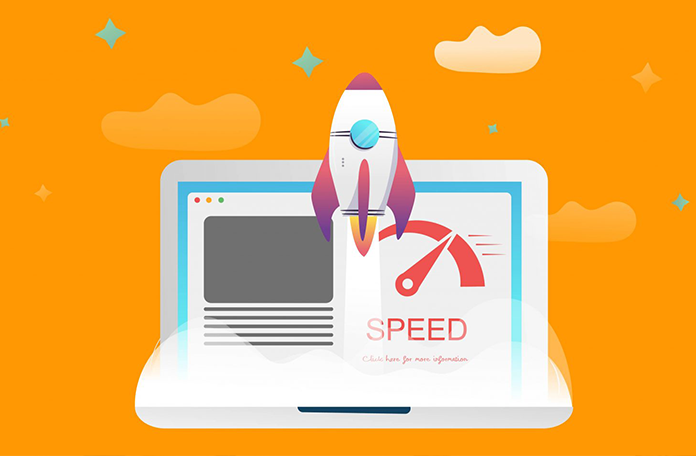Hello!
In the digital age, website speed is a critical factor for success. With users expecting pages to load in two seconds or less and search engines like Google prioritizing fast sites, every millisecond matters. While common optimization techniques like image compression and content delivery networks (CDNs) are well-known, lesser-known strategies can provide a significant edge.
Here are eight hidden gems to supercharge your page speed in 2025, ensuring a seamless user experience and improved SEO rankings.
1. Prioritize Critical Path Rendering
The critical rendering path is the sequence of steps a browser takes to process HTML, CSS, and JavaScript to display a webpage. Optimizing this path accelerates content delivery.
 Here’s how:
Here’s how:
- Inline Critical CSS: Embed essential CSS directly in the HTML to render primary content without waiting for external stylesheets. Tools like CriticalCSS can extract and inline these styles automatically.
- Defer Non-Critical JavaScript: Postpone loading non-essential scripts until after the main content renders, using attributes like `defer` or `async`. This ensures faster page interactivity, enhancing user experience.
By streamlining the critical rendering path, you reduce the time to first paint, making your site feel snappy and responsive.
2. Adopt HTTP/3 Protocol
HTTP/3, the latest evolution of the HTTP protocol, leverages QUIC to enhance data transfer efficiency over its predecessor, HTTP/2.
 Benefits include:
Benefits include:
- Reduced Latency: QUIC minimizes connection setup time, speeding up resource delivery.
- Improved Congestion Control: Advanced algorithms handle network congestion better, ensuring smoother data flow.
Switching to HTTP/3, supported by most modern hosting providers in 2025, can shave milliseconds off load times, especially for users on unreliable networks.
3. Implement Brotli Compression
Compression reduces file sizes, accelerating downloads. While Gzip has been standard, Brotli offers superior efficiency for text-based content like HTML, CSS, and JavaScript.
 Key advantages:
Key advantages:
- Better Compression Rates: Brotli achieves 20-30% smaller file sizes than Gzip, reducing transfer times.
- Faster Load Times: Smaller files mean quicker downloads, improving overall page speed.
Enable Brotli on your server (supported by platforms like Cloudflare) to optimize text-heavy pages and boost performance.
4. Optimize Web Fonts
Web fonts add personality but can slow down your site if mismanaged.
 Optimize them with these strategies:
Optimize them with these strategies:
- Use Font-Display Property: Apply `font-display: swap` in CSS to show fallback fonts while custom fonts load, ensuring text visibility.
- Leverage System Fonts: Use device-native fonts (e.g., -apple-system for iOS) for instant loading without sacrificing aesthetics.
By minimizing font-related delays, you enhance page rendering speed and maintain a polished look.
5. Lazy Load Offscreen Images
Lazy loading defers the loading of images outside the user’s viewport until they’re needed.
This technique:
- Reduces Initial Load Time: Loads only visible images, speeding up page interactivity.
- Saves Bandwidth: Downloads images on-demand, conserving user data and server resources.
Implement lazy loading with HTML’s `loading="lazy"` attribute or JavaScript libraries like Lozad.js for efficient image handling.
6. Preconnect to Required Origins
Establishing server connections takes time. The `preconnect` directive lets browsers set up connections to external resources (e.g., CDNs, APIs) in advance, reducing latency.
Benefits include:
- Faster Resource Fetching: Pre-established connections speed up asset delivery.
- Smoother Experience: Quicker loading of fonts, scripts, or animations enhances user satisfaction.
Add `<link rel="preconnect">` to your HTML for critical third-party domains, ensuring seamless resource access.
7. Minimize Main Thread Work
 The browser’s main thread handles tasks like parsing HTML, executing JavaScript, and rendering. Overloading it slows down performance.
The browser’s main thread handles tasks like parsing HTML, executing JavaScript, and rendering. Overloading it slows down performance.
Optimize with:
- Break Up Long JavaScript Tasks: Split large scripts into smaller, asynchronous chunks using techniques like code splitting or Web Workers.
- Streamline Parsing and Compilation: Use minified code and tools like V8’s TurboFan to optimize JavaScript execution.
Reducing main thread work ensures smoother interactions and faster page rendering.
8. Switch from MySQL to MariaDB
 Database performance can impact page speed, especially for dynamic websites.
Database performance can impact page speed, especially for dynamic websites.
MariaDB, a MySQL fork, offers performance advantages in certain scenarios:
- Aria Storage Engine: Outperforms MySQL’s MyISAM for high-performance operations.
- Subquery Optimizations: Executes complex queries faster, improving backend response times.
For guidance, NameHero’s Guide to switching from MySQL to MariaDB provides actionable steps for a seamless transition. This optimization can significantly enhance server-side performance for data-heavy sites.
Why Page Speed Matters in 2025
Fast websites aren’t just user-friendly—they’re critical for SEO and conversions. Google’s algorithms prioritize speed, with metrics like Largest Contentful Paint (LCP) and First Input Delay (FID) directly impacting rankings. Users, too, demand instant experiences—studies show 53% abandon sites taking over three seconds to load. These lesser-known techniques go beyond basic optimizations, delivering measurable improvements in performance, engagement, and search visibility.
Also read:
- KIRI Unveils KIRI Engine 4: A Leap Forward in Photogrammetry and Splatting Software
- Microsoft Ends Friendship with OpenAI, Turns to Anthropic as New Best Ally
- The Curious ML Project: Lens Blur Fields Unveils Unique Phone Identification Through Photo Blur
Conclusion
In 2025, optimizing website speed is non-negotiable for staying competitive. By prioritizing critical path rendering, adopting HTTP/3, implementing Brotli compression, optimizing fonts, lazy loading images, preconnecting origins, minimizing main thread work, and switching to MariaDB, you can achieve blazing-fast load times. These strategies not only enhance user experience but also boost SEO rankings and conversions. Start implementing these hidden gems today to craft a seamless, high-performing website that delights users and drives business success.
Thank you!
Join us on social media!
See you!






